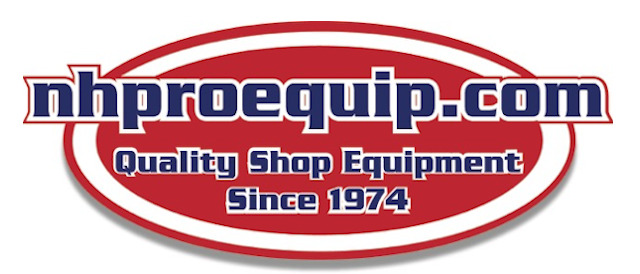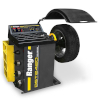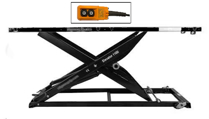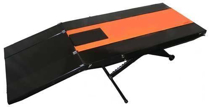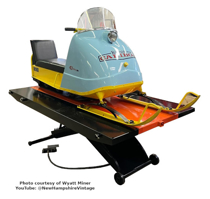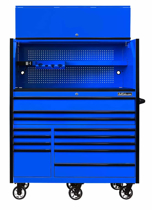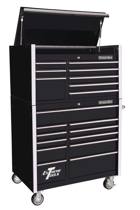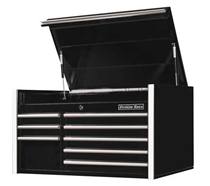Not all air compressors are created equal. Aside from tank size, horsepower, and PSI ratings, of course, they pretty much look and operate the same way. What many users may not realize however, is that there are more important differences than meet the eye, particularly when it comes to the compressor pumps themselves. The first mechanical compressors were used hundreds of years ago by blacksmiths. Used for generations, these simple bellows-type compressors became museum pieces during the Industrial Revolution with the introduction of piston power. Originally used in steam engines to drive machines, pistons were soon adapted to a wide range of other uses, including air compression and storage for future use. Today's compressor pumps are based on the same principles.
However, they have evolved significantly over the years, and have become the heart of many durable, high performance machines. Understanding the differences among these components can help users determine which air compressor is right for their needs.
The basics of piston-type pump operation Most air compressors are reciprocating or piston-type air compressors. Their operation is similar to an automotive engine. Inside the pump, a crankshaft moves a set of pistons up and down. On the down-stroke, air is drawn into the compression chamber through a one-way valve; as the rising piston on the up-stroke compresses the air, a second one-way valve opens to force the air into a pressure tank. As more air is forced into the tank, the pressure inside the tank rises. Most pumps are either single-stage or two-stage. The difference refers to the number of times intake air is compressed in a pump. A single stage compressor compresses intake air one time before sending the air into a storage tank. Single-stage air compressors can have one, two, or four cylinders, but the air is only compressed once. Most single-stage air compressors have a maximum pressure of 125 PSI. Two-stage air compressors compress air twice before sending it into a storage tank. A two-stage compressor has a minimum of two cylinders: a low-pressure cylinder (largest) and a high-pressure cylinder (smallest). Air is compressed once in the large cylinder and then sent through an air cooling tube, which reduces discharge air temperatures. Lower temperatures improve operating durability and efficiency. In most lower horsepower compressors, the interstage coolers use the same airflow that cools the rest of the compressor pump structure. In larger compressors, as well as in some special applications, water cooled interstage coolers may be used. Upon reaching the small cylinder, the air is compressed again. Two-stage air compressors produce a larger volume of air at higher pressures than smaller single-stage compressors. Two stage air compressors have a maximum pressure of 175 PSI.
Pump cylinders A wide variety of cylinder arrangements and designs are used in compressor pumps. These include a single vertical cylinder, dual vertical in-line cylinders, dual horizontal opposed cylinders, and single "V" or "W" designs made by combining two sets of in-line cylinders. The number and size of cylinders used is dependent on the capacity required and the number of stages. Multiple cylinders may be used in single stage compressors. Usually all the cylinders will be the same size. In two-stage compressors, the size of each successive stage cylinder is reduced as the air passed from cylinder to cylinder requires less space at each stage. Cylinders are made from machined castings that can be solid cast iron, die cast aluminum (with or without an iron or steel bore liner), or from solid aluminum. Solid cast iron is considered the most durable. For small oilless compressors, cylinders formed from aluminum tubing are often used. The cylinders may be separate from the crankcase and cylinder heads, or may be cast together with the crankcase or the cylinder head. For easier serviceability, having the crankcase separate from the cylinder is preferred. External fins on the cylinder combined with cooling airflow dissipate the heat of compression in air-cooled types.
Oilless, splash, and pressure lubrication Air compressors and their pumps are no different from other large machines in that proper lubrication is essential to insure long life and maximum service from an air compressor. Three types of lubrication systems are used in compressors: oilless, splash and pressure. In oil-free and oilless compressors, there is no oil on the cylinder walls. Oilless designs depend on the self-lubricating materials to allow the piston to slide in the cylinder and the grease in the sealed bearings. Splash lubrication relies on an oil dipper attached to the bottom of the connecting rod, which randomly splashes oil from the crankcase reservoir onto the bearings and internal parts of the compressor to keep them properly lubricated. This is the most common form of lubrication and is used in most reciprocating type air compressors. Pressure lubrication uses an oil pump driven by the crankshaft to draw oil out of the crankcase. It is then filtered and pumped through passageways in the crankshaft to the connecting rod bearing surfaces. This action provides direct, positive lubrication to these critical parts. Oil also sprays onto the cylinder walls lubricating the piston and piston bearings. A pressure lubrication system costs a little more, but delivers superior lubrication and is the system of choice for heavy-duty industrial service.
Drives Electric motors and internal combustion engines are most commonly used to drive the air compressor pumps. Direct drive and belt drive arrangements are available. Small single stage oilless compressors for home and light commercial use are generally direct drive electric motor designs. Small oil lubricated machines may be direct drive electric or belt drive. Larger oil-lubricated machines from 5 to 25 HP are almost exclusively belt drive. Only a few small oil lubricated units are built direct drive with internal combustion engines. Some special configurations use power takeoff drives in service trucks and heavy equipment. Drive design must take into account the torque fluctuation of both the compressor and the driver. Flywheels are selected to give the optimum combination of inertia to minimize fluctuations but still allow start-up under adverse conditions. In direct drive designs, the motor may be integrated with the compressor, sharing a common shaft and support structure as in small oilless types or may be connected with a coupling for larger sizes. In all cases the drive components must be properly shielded for safety and comply with OSHA requirements. Compressors for use in the home usually meet even more stringent UL requirements. Belt drive designs may use vee, poly vee, or multiple belts, and may require periodic maintenance. Most direct drive designs require little or no maintenance.
Selecting an Air Compressor The relation of compressor pumps to performance is critical when making your compressor purchase decision. Although the number of air compressor choices can be overwhelming, selecting the right mode; can be made easy by asking a few important questions. For what applications will the air compressor be used? Air compressors are used for jobs ranging from inflating tires to operating a factory. The application will determine the type of air compressor needed. Portable single-stage air compressors are used for one person operating air tools. Contractor air compressors are recommended when minimal weight, portability, and low maintenance is important. Stationary, single-stage air compressors are used for small shops in a garage or maintenance facility. Two-stage air compressors are recommended for industrial applications. What tools will be used, and how much CFM is needed? Some tools require more air (CFM) than others do. For example, sanders require more air than an air drill or air ratchets. Also the number of tools operated at once is a factor. How often will the air compressor be used? For regular use (several times per week), select an air compressor with 50/50 duty cycle such as a portable, contractor air compressor. For commercial/Industrial use (daily), select a higher duty cycle air compressor such as high performance, single-stage or two-stage air compressor. Do you have plans for future expansion? If you expect to need more air for more uses in the near future, it is less expensive to buy up to the next larger air compressor than to purchase a second compressor in the future. What type of power is available? Portable air compressors typically operate on 115 volt, 15 amp circuits. Stationary, single-stage compressors and some large portable compressors operate on 230 volt, single-phase power. Two-stage air compressors 10 HP and larger operate on three phase power only, 5 and 7.5 HP. Two-stage compressors are available for single-phase and three-phase power. If no electrical power is available, gas engine air compressors are required.
Now you know Although a first glance at a piece of equipment like an air compressor can be intimidating, a bit a knowledge and insight will make this easier. It's really no different than shopping for a car. By doing your homework, shopping around, and asking the right questions, you will find the best air compressor to fit your needs.
Check out Saylor Beall Compressors and FS Curtis Compressors here.
